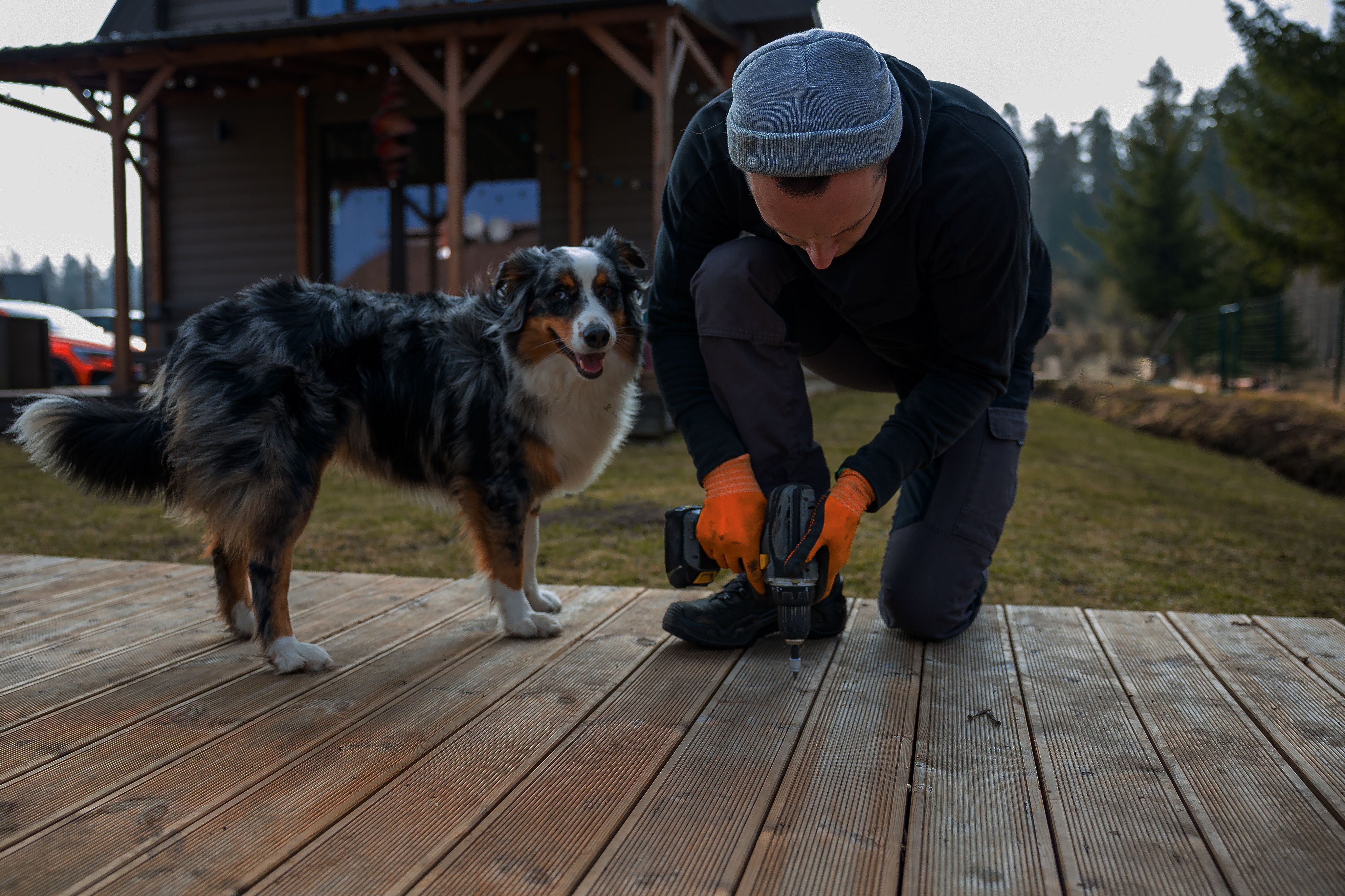
From planning and design to construction and materials, we'll walk you through every step of the process to help you replace your trim and doors.
Step 4: Finish Your Trim & Doors
Recommended Tools:
- Rags
- Cleaners/Degreasers
- Sandpaper
- Paint/Stain/Clear Coat
- Primer
- Painters Tape
- Drop Sheet
- Dust Masks
- Gloves
- Safety Glasses
- Coveralls
- Paintbrush/Roller
All trim and doors will require some form of finishing. Refer to the manufacturer’s recommended finishes for your doors and trim. Using the correct type of finish will ensure your warranty remains valid.
Stage 1. Prep Work: Sanding, Degreasing, and Dust Removal
- Be sure to purchase your safety gear before you begin. Old paint may contain lead, or other dangerous chemicals. New paint also has chemicals that are harmful to breathe in so a high quality dust mask, safety glasses, gloves, and coveralls will be required when sanding any paint.
- Drop cloths, painters masking tape, and floor protectors can help prevent mess while working on your project.
- Purchase enough of your desired finish and required accessories to last the entire project, with a little extra factored in. This will save you money in the long run, and ensure the process goes smoothly. The last thing you want to do is make an extra trip to the hardware store while your painting task is half done.
- Start by sanding your material.
- If the door or trim has already been primed a light sand with a fine grit sandpaper (240 – 320 grit) will help the paint adhere to the surface.
- When your door or trim is raw start with a light sand at 240 grit unless it feels rough or has visible imperfections. Starting with a heavier grit such as 180 will remove the roughness faster.
- Take great care as you are sanding your door as many doors have thin veneers on the surface and you can easily sand through them and ruin the appearance of your door.
- Remove all dust, or grease from the material you intend to paint, prime, or stain. Use a pre-painting cleaner such as TSP to ensure the finish adheres well to the surface. Some woods may need a pre-stain conditioner as well.
- Let your material dry completely after using a cleaner before moving to the next step. A slight dampness may hinder paint drying time, and cause bubbling or cracking in the finished coat.
- Repeat the process of lightly sanding and removing dust between each coat after it dries.
- Note: It is important to finish a pocket door before it is installed in the wall cavity, as you will not be able to remove the door once the trim has been installed.
Stage 2. Priming
- A good quality primer is required for proper adhesion of the top coat to your trim or doors. You will need to prime your doors (all six sides), and trim to prevent moisture damage, refer to your manufacturer’s warranty for more information.
- If you are using a brush to apply: Ensure your brush is loaded with a moderate amount of paint, if you see any large drips coming down the bristles utilize the edge of the can to remove some of the paint. Start at the top of the material, prime with long, overlapping brush strokes. This will help you create a smooth coat without any ‘high’ spots on the primer.
- If you are using a roller to apply: Ensure your roller is fully saturated with primer, then utilize the paint tray ribbing to take off any excess. Start in the middle of the project and roll to the top corner, then to the bottom corner in long, overlapping strokes of the roller. This will ensure you don’t get any high spots or roller marks in the primer.
- If you notice uneven areas in your first coat do not attempt to fix them until the primer coat is dry or you will create large brush or roller marks. Small issues can be fixed when the primer is dry by a light sand, or a second coat of primer.
- A second primer coat may be required depending on the coverage, or manufacturer’s warranty specifications.
- Sand lightly after the primer coat is completely dry using a fine grit sandpaper (240 – 320 grit). This provides an even surface for the paint to adhere to. Do not worry about little scratches from the sandpaper, a good paint will cover the surface and leave a smooth finish.
Stage 3. Painting Your Top Coat
- Pick a good quality interior paint. Remember that doors, and trim get the most traffic of any surface in your home. Spending extra on a premium quality, scratch and scuff resistant paint, ensures that the finish will require less maintenance, and last longer
- A project will likely require at least two coats of paint, depending on paint coverage and warranty specifications. A third coat may be needed to ensure the colour is bold and vibrant.
- Door manufacturers require that all 6 sides of a door are painted with a top coat to stop any moisture from penetrating the door and to keep the manufacturer’s warranty valid.
- Sand between coats of paint with a fine grit sandpaper (320 grit or higher) this will help the paint adhere to the previous layer.
- Let the paint dry for the recommended time between coats. Paint may feel dry to the touch after an hour, but may require 4-6 hours between coats. Refer to manufacturer specifications to prevent changes in colour, brush marks, flaking, or bubbling over time.
- Remember that it’s always possible to fix mistakes in painting. Small blemishes can be fixed with a second coat, drips or high spots of paint can be removed with sandpaper and touched up after. Large, visible brush marks can also be sanded out, and another coat applied. For major mistakes, paint can be sanded completely off your material before repeating the process from the first step.
- When you are satisfied with the finish on your project, be sure to let the project cure based on the manufacturer’s specifications.
- Once your project is fully painted be sure to follow your paint manufacturer’s recommended cleaning instructions. It may be up to 40 days before you can clean the newly painted material.
Trimlite Instructions

Visual Learner? We get it.
We get it. Turkstra TV is full of helpful videos to get you up and running on your next home improvement project.
Our Coaches have your back
Need help? Talk to our professional coaches - it's free.
Get preferred pricing & exclusive promos with Build-it-Better.
Receive exclusive, members-only discounts on select products each month!

